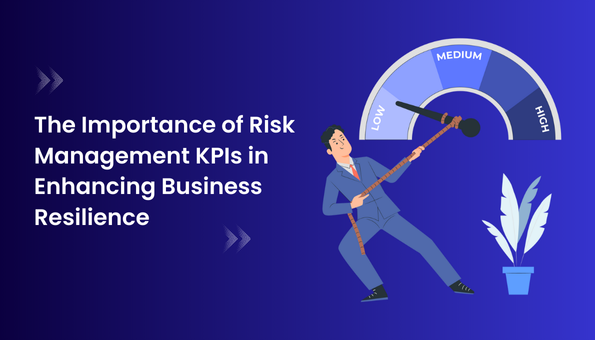The Rising Importance of Risk Management in Health and Safety
The Rising Importance of Risk Management in Health and Safety
Blog Article
Discovering the Importance of Risk Management for Effective Decision-Making Methods
In the complex world of service, Risk Management emerges as a vital element in the decision-making procedure. The capacity to recognize possible dangers and opportunities, and strategize as necessary, can spell the distinction in between success and failing.
Understanding the Idea of Risk Management
Risk Management, a critical component in decision-making, is frequently misinterpreted or oversimplified. Risk Management involves self-displined and organized methods, using data and informative evaluations. From monetary uncertainties, legal liabilities, calculated Management errors, to crashes and all-natural disasters, it addresses various threats - importance of risk management.
The Role of Risk Management in Decision-Making Processes
In the realm of critical planning and company operations, Risk Management plays an essential function in decision-making processes. It aids in identifying possible threats and uncertainties that can influence the accomplishment of business objectives. By tracing these threats, firms can formulate techniques to reduce their effect, guaranteeing business continuity and security. Risk Management hence comes to be an important tool in decision-making, aiding leaders to make informed options based on a detailed understanding of the risks entailed. It motivates a positive approach, allowing organizations to prepare and expect for feasible future situations. This significantly decreases the possibility of negative effects, promoting extra effective and effective decision-making approaches. Therefore, Risk Management functions as an important element in the decision-making processes of any kind of organization.

How Risk Management Boosts Strategic Planning
In the context of tactical planning, Risk Management plays an essential duty. Initiating with the identification of possible dangers, it further includes the execution of Risk mitigation procedures. The function of Risk Management is not fixed yet vibrant, as it demands constant tracking and adjusting of approaches.
Determining Possible Risks

Implementing Risk Mitigation
Risk reduction techniques can range his comment is here from Risk evasion, Risk transfer, to risk reduction. Each approach should be customized to the specific Risk, considering its possible impact and the company's Risk tolerance. Effective Risk mitigation requires a deep understanding of the Risk landscape and the possible effect of each Risk.
Tracking and Readjusting Methods
Though Risk reduction is a critical step in strategic planning, continual monitoring and adjustment of these strategies is equally important. It additionally provides an opportunity to assess the success of the Risk Management procedures, allowing modifications to be made where necessary, further improving calculated planning. Tracking and adjusting Risk Management techniques is a vital element for improving a company's strength and critical preparation.
Case Studies: Successful Risk Management and Decision-Making
In the world of organization and money, successful Risk Management and decision-making typically serve as the columns of thriving ventures. These instances highlight the value of astute Risk Management in decision-making procedures. These situations highlight the vital duty of Risk Management in calculated decision-making.
Devices and Techniques for Efficient Risk Management
These tools, such as Risk registers and heat maps, help in determining and assessing prospective dangers. Risk response methods, a crucial element of Risk Management, involve approving, staying clear of, transferring, or mitigating dangers. With these techniques and devices, decision-makers can browse the complicated landscape of Risk Management, best site thereby helping with informed and reliable decision-making.
Future Patterns in Risk Management and Decision-Making Techniques
As we check out the substantial landscape of Risk Management, it comes to be obvious that the tools and techniques utilized today will remain to advance. Future patterns point in the direction of an increased dependence on technology, with fabricated knowledge and equipment learning playing significant functions. These technologies will make it possible for companies to forecast potential risks with better precision and make more educated choices. Furthermore, there will be a growing focus on durability, not simply in managing dangers but also in getting better from negative scenarios. Last but not least, the concept of he said Risk culture, where every member of a company realizes and involved in Risk Management, will certainly obtain much more prominence. These trends herald a more proactive and inclusive technique towards Risk Management and decision-making.
Conclusion

Risk Management hence comes to be an important tool in decision-making, helping leaders to make enlightened selections based on a thorough understanding of the risks entailed. Risk reduction approaches can vary from Risk avoidance, Risk transfer, to take the chance of reduction (importance of risk management). Efficient Risk mitigation calls for a deep understanding of the Risk landscape and the possible effect of each Risk. Risk action techniques, a key element of Risk Management, include approving, preventing, moving, or mitigating threats. The principle of Risk society, where every participant of an organization is mindful and involved in Risk Management, will certainly gain a lot more importance
Report this page